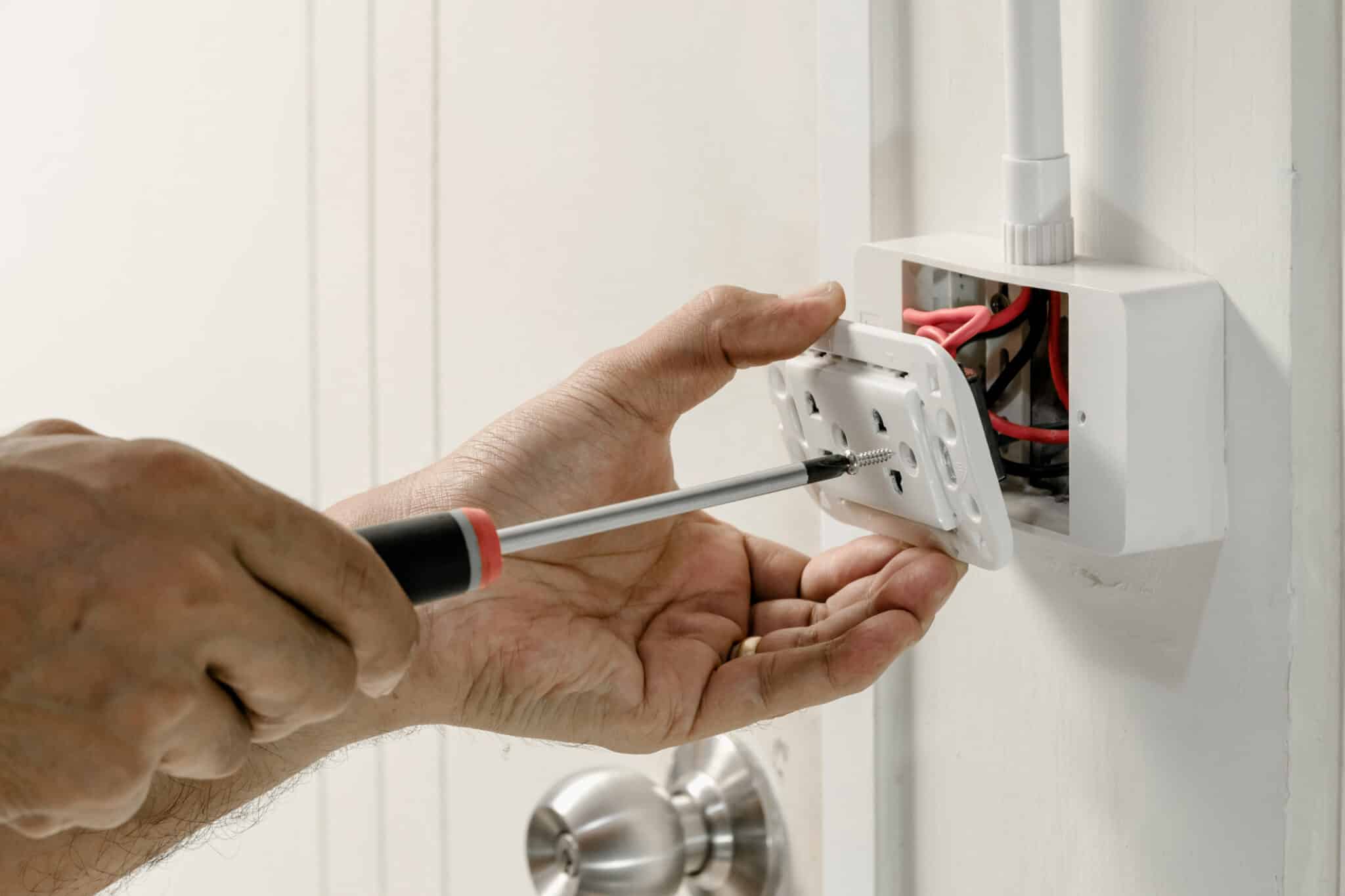Surge protectors shield electronics from sudden voltage spikes caused by lightning, power overloads, or large appliances turning on. They work using components like MOVs (Metal Oxide Varistors) that redirect excess electricity safely. Key features include automatic shut-off, energy-saving modes, and built-in safety mechanisms. For maximum protection, whole-house systems are best, while point-of-use protectors are ideal for individual devices. Regularly check and replace them every 2-3 years, or after a major surge, to maintain safety.

Did your TV or computer suddenly stop working after a storm? Power surges can strike when you least expect them, and they can seriously mess up your expensive electronics. That’s where surge protectors come in.
These handy devices are like bodyguards for your gadgets, keeping them safe from unexpected spikes in electricity.
But how do they actually work, and why do you need one in your home? Let’s dive into the world of surge protectors and find out how they can save your stuff—and your wallet!
What is a Surge Protector?
Picture this: you’ve got your gaming console, TV, and computer all plugged in, and then—boom—a power surge hits. Without any protection, your electronics could get fried in seconds. That’s where a surge protector comes in. A surge protector is a device that shields your gadgets from sudden spikes in electricity, kind of like a safety net.
But it’s not just any regular power strip! While power strips just give you extra outlets, surge protectors have special features that detect extra voltage and redirect it safely away from your devices.
This helps keep your electronics safe from power surges caused by storms, electrical overloads, or even the flick of a light switch. In places like Mt. Pleasant and Summerville, where unpredictable weather can lead to power surges, having a surge protector is a smart move to protect your home’s electronics.
How Surge Protectors Work
When everything is normal, they let the right amount of electricity flow through to your devices. But when a surge hits—like from a lightning strike or a sudden power spike—they jump into action.
Inside a surge protector, there’s a component called a MOV (metal oxide varistor). This tiny part is key to how surge protectors do their job.
When it detects extra voltage, it redirects that surge away from your gadgets and safely into the ground. It’s like a pressure relief valve for electricity, only allowing the safe, normal amount to pass through.
Common Causes of Power Surges
Power surges can happen out of the blue and for a bunch of different reasons. Knowing what causes them can help you understand why surge protectors are so important, especially in areas like Mt. Pleasant and Summerville. Here are some of the most common culprits behind power surges:
- Lightning Strikes: During thunderstorms, a lightning strike near your home can send a huge amount of electricity through the power lines. Even if it doesn’t hit your house directly, it can still cause a dangerous surge that can damage your electronics.
- Electrical Overloads: Ever plugged too many devices into one outlet or power strip? This can overload the circuit, causing a power surge. It’s like trying to fill a water balloon too fast—eventually, something’s got to give!
- Faulty Wiring and Downed Power Lines: Old or damaged wiring in your home can lead to inconsistent power flow, which makes surges more likely. Similarly, when power lines are damaged or downed during storms, they can cause sudden changes in the electrical supply.
- Power Cycling of Large Appliances: Big appliances like refrigerators, air conditioners, and washing machines draw a lot of power when they turn on. This sudden demand can create mini-surges that might not seem like much, but over time, they can wear down your sensitive electronics.
Understanding these common causes can help you see why surge protectors are a must-have in any home. They’re the first line of defense against these everyday electrical threats.
Types of Surge Protectors
When it comes to protecting your home from power surges, there’s no one-size-fits-all solution. There are different types of surge protectors, each designed for specific needs and levels of protection. Let’s break down the main types you might consider for your home in Mt. Pleasant or Summerville:
- Whole-House Surge Protectors: These are installed at your main electrical panel and protect all the devices in your home. Think of them as a big umbrella that shields everything under your roof. They’re a great option if you want comprehensive protection, especially in storm-prone areas.
- Point-of-Use Protectors: These are the most common surge protectors, like power strips or outlet adapters that you plug into individual outlets. They’re perfect for protecting specific devices like your TV, computer, or gaming console. They’re easy to use and move around as needed, making them a versatile choice for any room.
- UPS (Uninterruptible Power Supply) Systems: These are like surge protectors with a bonus feature—they keep your devices running for a short time if the power goes out. This is super handy for computers and other sensitive electronics that could be damaged by sudden shutdowns. They provide both surge protection and backup power, which can be a lifesaver during unexpected outages.
Choosing the right type of surge protector depends on what you need to protect and how much coverage you want.
For everyday use, point-of-use protectors are usually a good start. But if you want maximum protection, especially for a larger home or sensitive equipment, a whole-house surge protector or a UPS might be the way to go.
Benefits of Using Surge Protectors
Surge protectors do more than just sit around looking like fancy power strips—they’re your home’s first line of defense against electrical damage. They protect your electronics by blocking sudden voltage spikes, which can fry your devices in an instant.
This is especially important for sensitive gadgets like computers and gaming consoles, which are easily damaged by even minor surges. With a surge protector, you can avoid costly repairs and keep your electronics safe from unexpected electrical mishaps.
Protecting Your Electronics
One of the biggest perks of surge protectors is that they help keep your electronics safe from power surges. Without a surge protector, devices like your TV, computer, or smart home gadgets are at risk every time there’s a spike in your home’s electrical supply.
A surge protector steps in to divert or block the extra voltage, preventing damage to your valuable equipment. It’s a small investment that can save you from the hassle and expense of replacing expensive electronics.
Preventing Electrical Fires
Power surges can cause more than just damage to your devices—they can also start fires if the surge is strong enough to create sparks. Surge protectors help prevent this by controlling the flow of electricity and stopping dangerous surges before they reach your outlets.
By adding this layer of protection, you’re not just saving your gadgets, but also adding an extra safety feature to your home. It’s like having a fire extinguisher for your electrical system, reducing the risk of potentially devastating fires.
Saving Money on Repairs
Repairing or replacing electronics damaged by power surges can get expensive quickly, especially for high-end devices. Using a protective device helps you avoid these costs by acting as a shield against sudden spikes in voltage.
Instead of facing the hassle of fixing or replacing your gadgets, you just need to maintain your protective device and replace it when necessary. This simple step can save you a lot of money and stress over time, making it a smart investment for any home.
Key Features of High-Quality Surge Protectors
Not all surge protectors are created equal, so knowing what features to look for can make a big difference in how well they protect your electronics. Here are some key features that high-quality surge protectors often include:
- Automatic Shut-Off Mode: This feature is like having a built-in safety net that cuts off power to your devices when a surge is detected, providing extra protection for your electronics. It’s great for peace of mind because it means your surge protector won’t keep working after it’s no longer effective.
- Energy-Saving Designs: Some surge protectors come with energy-saving features, like load-sensing or master/slave plugs, that help reduce your power usage. These designs can cut power to devices that aren’t in use, helping you save on your electricity bill while still keeping your electronics safe.
- Safety Features: Look for surge protectors with additional safety features like GFCI (Ground Fault Circuit Interrupter), 3-line protection, and built-in circuit breakers. These features offer extra layers of protection against electrical faults, making them a safer choice for your home.
Choosing a surge protector with these features can give you more comprehensive protection for your electronics and help you avoid potential issues down the line.
Installing and Using Surge Protectors Safely
Protecting your devices from electrical surges goes beyond just plugging in a protector and calling it a day. Here are some practical tips to ensure you’re getting the best surge protectors for your electronics:
Proper Placement and Installation Tips
When setting up, make sure the protectors are placed in a well-ventilated area, free from coverings like rugs, curtains, or furniture that might cause overheating. Position them where the indicator lights are visible so you can easily check if they’re still functioning.
Avoid overloading a single unit by connecting too many high-power devices, such as large TVs or refrigerators. For such heavy-duty appliances, consider using separate protectors to distribute the load effectively.
Common Mistakes to Avoid
A frequent mistake is daisy-chaining, which involves plugging one protector into another. This can create significant safety risks, including overheating or even fires, and greatly reduces their effectiveness.
Another common error is using outdated or worn-out devices; they lose their protective capabilities over time, so it’s crucial to replace them regularly. Also, don’t rely on basic power strips—they’re not equipped to handle electrical surges and won’t provide the necessary protection for your valuable electronics.
When to Call a Professional
If you’re thinking about installing a whole-house surge protection system or have concerns about your current setup, it’s wise to consult a professional electrician. They can evaluate your home’s electrical system, recommend the best type of surge protectors, and ensure everything is installed correctly and safely.
Professional guidance is especially important if your home has older wiring or frequent power issues that could compromise your protectors’ effectiveness.
Maintenance and Replacement
Keeping your surge protection devices in top shape is key to ensuring they do their job when you need them most. Here’s what you should know about maintaining and replacing these devices:
Signs Your Protector Needs Replacing
One of the easiest ways to tell if it’s time to replace your device is by checking the indicator light, which most models have. If this light is off, it usually means the device is no longer providing protection, even if it still powers your devices.
Also, if your protector has handled a major surge, like from a nearby lightning strike, it’s often best to replace it, as its internal components can wear out after absorbing large amounts of excess voltage.
Additionally, if you notice any physical damage, like scorch marks or a burnt smell, unplug the device immediately and replace it.
Lifespan of Different Types
The lifespan of your surge protection devices varies depending on the type and how often they handle surges. Basic point-of-use protectors, like power strips, typically last around 2-3 years, but their lifespan can be shorter if they frequently deal with power spikes.
Whole-house systems, on the other hand, are built to last longer—often up to 10 years—but they still require regular inspections, especially after severe weather events.
Always refer to the manufacturer’s guidelines for specific recommendations, and consider replacing any device that shows signs of wear or damage to keep your home’s electronics safe.
Protect Your Home with Mister Sparky of Charleston, SC!
Worried about keeping your electronics safe from power surges? At Mister Sparky of Charleston, SC, we’ve got you covered with expert surge protection solutions tailored for homes in Mt. Pleasant, Summerville, and surrounding areas.
Don’t leave your valuable devices at risk—let our professional team help you choose and install the best protection for your needs. Ready to safeguard your home? Contact Mister Sparky of Charleston today and schedule your consultation!

Frequently Asked Questions (FAQs)
Do these devices save energy?
While they don’t directly save energy, some models include features like smart plugs that can cut power to devices that aren’t in use. This can help reduce your electricity bill by preventing unnecessary power drain. So, while the primary function is protection, they can also contribute to a more energy-efficient home setup.
How often should you replace them?
devices every 2-3 years, or immediately after they’ve handled a significant surge, like from a lightning strike. Over time, the components inside can wear out, reducing their effectiveness. Regular replacement ensures your electronics stay protected from unexpected voltage spikes.
Can they handle multiple high-power devices?
Not all models are equipped to handle high-power appliances like refrigerators or gaming PCs. Always check the capacity and make sure you’re not exceeding the recommended load, which can create safety hazards.
Are whole-house systems worth it?
Whole-house protection is especially valuable in areas prone to severe weather, such as Mt. Pleasant and Summerville. These systems offer comprehensive coverage for all the electronics in your home, safeguarding against large, damaging power surges. They provide peace of mind by reducing the risk of costly repairs or replacements.
Do these devices work during a blackout?
Standard protectors don’t function during a blackout, as they only manage voltage spikes. However, a UPS (Uninterruptible Power Supply) can keep your essential devices running briefly and protect them when the power comes back on. This combination is ideal for sensitive electronics that need consistent power.






